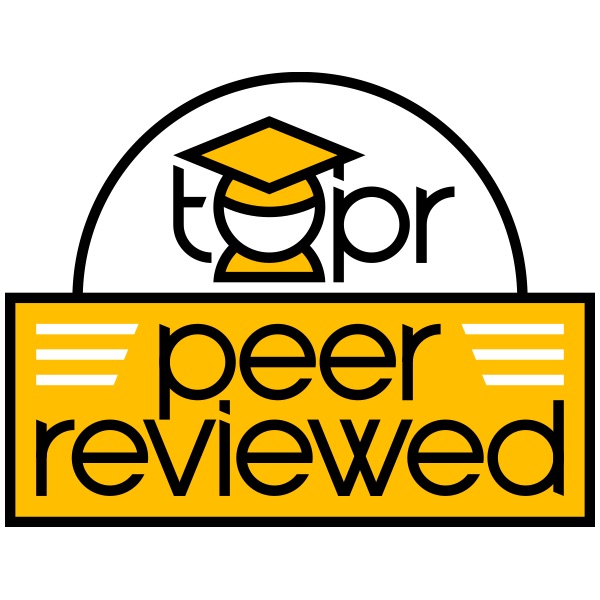
Students want to know what will be on the test. But faculty want students to focus on authentic learning rather than simply scoring well. Our strategy addresses both desires. Good course design involves alignment of course and lesson objectives with relevant activities and assessments. It is imperative that students be provided with this “roadmap” so that the significance of all course activities is clear. Our strategy begins with the visual representation of lesson objectives in order to help students grasp intended goals. Visual images catch our attention, and can provide a pleasing introduction to what students should learn. To support student focus on objectives and an understanding of course design, our strategy also includes a repeated metacognitive activity aimed to encourage durable learning.
For each lesson, students employ proven study strategies to engage with lesson content and share their answers to one of six questions in a discussion forum. Instructors provide public feedback and highlight quality responses in an effort to promote further understanding for all students. This formative assessment activity also provides faculty the opportunity to clarify problem areas and to adjust their own teaching plans to benefit students. The result is increased authentic learning and improved assessment scores.
Link to example artifact(s)
The graphic representation of lesson objectives from Geography 486: Cartography and Visualization, serves to help students understand the lesson’s intended goals. The visual image is eye catching and engaging and employs straightforward language and ideas that provide an attractive introduction to Lesson 1, what students should learn, and the types of activities they can expect.
Students at the beginning of the course are also provided a handout showing the relationship between course objectives, lesson objectives and their assessments. They are asked to question themselves as they read and study the course material. The six questions are:
- Do I understand what I am reading? Can I put it in my own words?
- How does what I am reading relate to the lesson objectives?
- How can I relate what I am reading to stuff I already know?
- How would I describe what I’m reading to someone else?
- Can I illustrate this material in a visual way – like a chart, a drawing, a table or diagram?
- What questions do I have that would help me understand the material better?
These six questions are grounded in proven study strategies that favor genuine learning over superficial exam preparation. When students work with course material in conjunction with these strategies, they think not only about how the content supports the lesson objectives, but about how that content is relevant to what they already know, about related questions they may have, and about how to engage with the material well enough to be able to put it into their own words. They also think about how they might best learn the material themselves. They might challenge themselves with retrieval techniques and the linking of concepts with one another, both of which have proved to promote durable learning, or may focus on how they might explain the material to others, which requires in-depth engagement beyond studying for an exam. They might even synthesize a visual representation of the material, and thus employ dual coding — a process that results in more than one way to access material in the future.
After each lesson, students are asked to share answers to the questions they asked themselves while studying and are also encouraged to explain what strategy was most helpful and why. This requires metacognitive work in the form of thinking in detail about one’s learning. Teacher feedback in this forum can help clarify ideas, answer questions, correct misunderstandings, and identify problem areas that may warrant more explanation or attention. And of course students learn from this exchange what is working for others and what areas might be worth exploring for their own learning.
By the time assessments are administered, students engaged with these study strategies are well prepared and, hopefully, are less interested in cheating, as well. They can also transfer these learning strategies to other learning experiences both in and outside of schooling.
GEOG 486 Lesson 1 objectives.pdf
What is covered on the exam.pdf
Link to scholarly reference(s)
Brown, P. C. (2018). Make it stick: The science of successful learning. S.l.: Belknap Harvard.
Dunlosky, J., Rawson, K., Marsh, E., Nathan, M., & Willingham, D. (2013). Improving students’ learning with effective learning techniques: Promising directions from cognitive and educational psychology. Psychological Science in the Public Interest, 14(1), 4-58. http://doi.org/10.1177/1529100612453266
How To Take Study Notes: 5 Effective Note Taking Methods. (2018, April 24). https://www.oxfordlearning.com/5-effective-note-taking-methods/
Kuepper-Tetzel, C. (2018, July 05). Optimizing your learning schedule. http://www.learningscientists.org/blog/2018/7/5-1
McGuire, S. Y., & McGuire, S. (2016). Teach students how to learn: Strategies you can incorporate into any course to improve student metacognition, study skills, and motivation. Sterling: Stylus Publishing, LLC.
Sumeracki, M., & Weinstein, Y. (2018). The learning scientists. http://www.learningscientists.org/
Citation
Sutterlin, J., & Scalzi Wherley, M. (2018). Encourage metacognitive learning by visualizing objectives. In B. Chen, A. deNoyelles, & A. Albrecht (Eds.), Teaching Online Pedagogical Repository. Orlando, FL: University of Central Florida Center for Distributed Learning. https://topr.online.ucf.edu/r_54kam39gevsd4yx/.